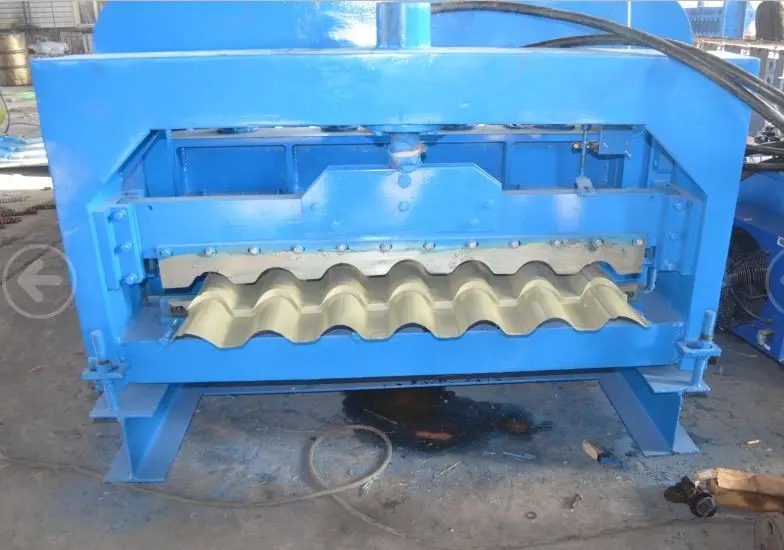
Highway Guardrail Plate Roll Forming Machine An Essential Tool for Road Infrastructure
Highway safety is a paramount concern for governments and civil engineering professionals worldwide. One of the most critical components in ensuring the protective measures along roadways is the guardrail. Guardrails help prevent vehicles from veering off the road, thereby reducing the risk of accidents and enhancing safety for both drivers and pedestrians. The effectiveness of guardrails primarily depends on their design and material quality, which can be significantly improved through advanced manufacturing processes. This is where the highway guardrail plate roll forming machine comes into play.
What is a Highway Guardrail Plate Roll Forming Machine?
A highway guardrail plate roll forming machine is a specialized piece of equipment used to manufacture guardrail panels from metal sheets. The machine operates through a series of rollers that progressively shape the metal into the desired profile needed for guardrails. This method is known as roll forming, where flat metal strips are fed through a series of rollers that bend and shape the material into specific cross-sectional profiles. The resulting guardrail plates have precise dimensions, superior strength, and durability, making them suitable for various highway applications.
Benefits of Using a Roll Forming Machine
1. High Precision and Consistency One of the primary advantages of using a roll forming machine is the high degree of precision it offers. The machine can produce guardrail plates with consistent quality and exact measurements, ensuring that each panel fits seamlessly with others in a constructed guardrail system. This consistency is crucial for meeting safety standards and regulatory requirements.
2. Cost-Effectiveness The efficiency of the roll forming process allows for lower production costs. The machine can operate continuously, significantly increasing the output per hour compared to traditional manufacturing methods. This not only saves time but also reduces labor costs and material waste, thereby enhancing profitability for manufacturers.
3. Versatility Modern roll forming machines come equipped with the ability to produce different guardrail profiles by simply adjusting the rollers. This flexibility means that manufacturers can cater to various customer needs and preferences without investing in multiple machines.
4. Robustness of the Final Product The materials typically used for highway guardrails, such as steel or aluminum, lend themselves well to the roll forming process. The resulting guardrail plates are strong and resistant to environmental factors such as corrosion, ensuring long-lasting performance even under harsh conditions.

Applications in Highway Construction
Guardrails are an integral part of highway infrastructure, significantly contributing to the overall safety of road networks. The frames produced by the highway guardrail plate roll forming machine can be found in various configurations, including W-beam, thrie-beam, and cable guardrails. Each design offers different levels of impact resistance depending on the specific requirements of the road and the volume of traffic.
In addition to road safety, the roll-formed guardrail plates can be utilized in various other applications, including bridges, parking lots, and temporary work zones. Their versatility makes them an indispensable asset in civil engineering projects across the globe.
Future Trends and Innovations
As the demand for improved highway safety continues to grow, so does the need for more advanced manufacturing technologies. Innovations in automated roll forming machines are on the rise, incorporating smart technologies and IoT capabilities. These advancements allow manufacturers to monitor production lines in real-time, enhancing efficiency, reducing downtime, and improving overall product quality.
Moreover, the integration of eco-friendly materials and sustainable production practices into the manufacturing process is becoming increasingly important. The future of guardrail manufacturing will likely emphasize not only safety and efficiency but also environmental stewardship.
Conclusion
The highway guardrail plate roll forming machine is a critical tool in the production of vital safety infrastructure. By providing high-quality, precisely engineered guardrail plates, this machine plays an essential role in reducing traffic accidents and enhancing road safety. As technology advances, the future of guardrail manufacturing promises even more efficient, cost-effective, and environmentally friendly solutions to meet the growing demands of road infrastructure worldwide.